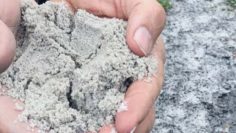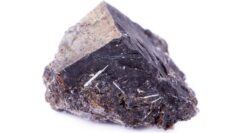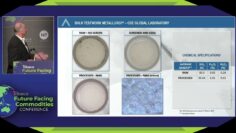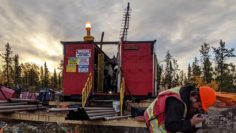{australien_flagge}Timing in IPOs is a matter of luck. The current poor environment for IPOs can be seen in the IPO of Allup Silica (ASX: APS; FRA: U77) in Australia. The Australian silica sand start-up has just successfully raised AUD 5 million at AUD 0.20 from institutional investors, and the share price has already crumbled to AUD 0.125 in the first week. It makes you wonder if you should congratulate the company for pulling off the IPO, or feel sorry for the investors in the last round. Either way. At current prices, the market value is less than AUD 10 million. A$5 million of that is cash.
The company has enough cash in its coffers for the next two years to execute its business plan: The company has secured a current portfolio of twelve prospective silica sand tenements (9 granted and 3 applications pending) over three project locations in Western Australia. The Company is also looking for more prospective silica areas (and ports) to help mitigate exploration and project risks, some of which could be in other areas of Australia. This is in keeping with Allup’s strategic vision of multiple projects using multiple ports.
In selecting the projects, care was taken to ensure good road access to ports with potential for future transport capacity. Attention was also paid to the particular quality and type of the sand. It should be as high as possible in SiO2 (silica) and as low as possible for FeO3 (iron) so that the projects are suitable for higher-value use, such as glass production, as well as for processing the silica sand needed to supply the solar industry (which is seeing increased demand). High-quality sand is a finite resource that will become a scarce commodity in the coming years, the thesis goes.
Once in production, the projects could provide high-quality sand for decades. The short-term market action following the IPO could hardly be in greater contrast to this long-term outlook.
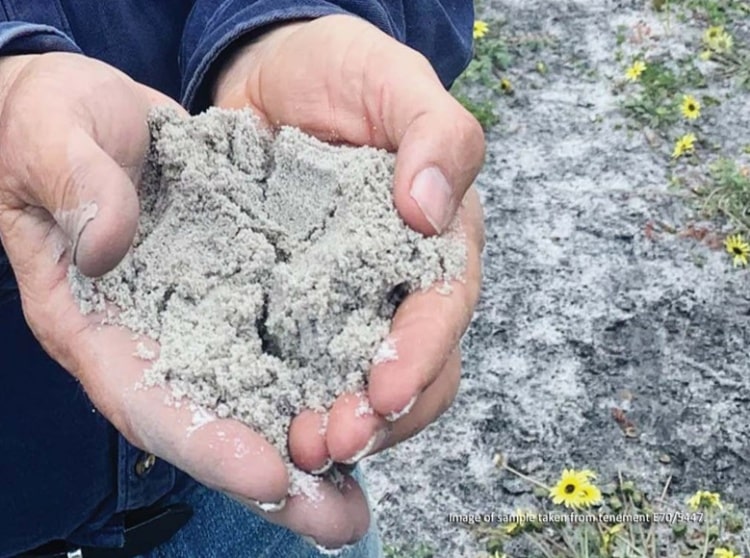
Figure 1: We tend to forget that sand is also a finite resource. There is plenty of it, but first, not all types of sand are created equal, and second, sand mining conflicts with conservation in many places.

Figure 2: Allup has so far secured 12 tenements (9 granted and 3 applications pending) in three regions of Western Australia.
What is silica sand used for?
Quartz sand is the most widely used raw material on our planet after air and water. It is the main ingredient in all types of glass manufacturing, including specialty glass for solar panels and high-tech glass. Demand from the glass industry is increasing by 5-6% annually, or about 8-10 million tons per year. About 47% of the world’s glass is produced in Asia. Silica sand is an essential component of the foundry and casting industry. The largest foundry industry is in Korea, where it dominates, especially in large ship components. Silica sand is also the main ingredient in concrete. What is easily forgotten: Silica sand is also a finite resource that is rapidly being depleted, and the Asia-Pacific region is currently experiencing increasing demand at a time when global supply is tight. It is not just the shortage of high-quality sand. The problem is exacerbated by the often poor connectivity of deposits combined with ever-increasing environmental regulations that make it increasingly difficult to obtain mining permits.
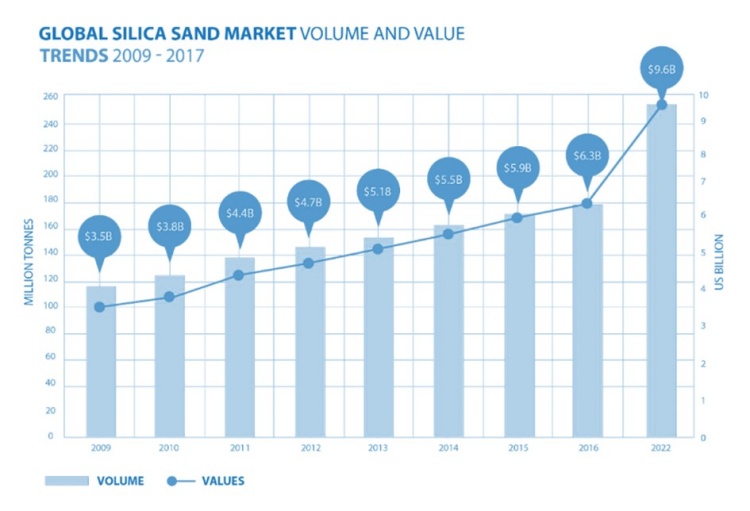
Figure 3: Market researchers at the US research institute IMARC have calculated an annual growth rate of 7.2 percent for the past 10 years. For 2022, the experts estimate the industry’s revenue at USD 9.6 billion.
Quartz sand exploration differs from typical metal exploration in that the quartz sand is generally found at or near the surface to a depth of 20 or 30 meters or less. Quartz sand targets initially identified within known geologic regions may sometimes be visually inspected at surface. Initial surface sampling to a depth of no more than 2 meters can provide the first indication for the potential for silica sand specifications prior to processing. The results of this sampling help define an area of interest. Once an area of interest is defined, additional machine drilling is conducted to determine the size and dynamics of the resource through chemical composition analysis. Subsequently, based on the results of the chemical composition analysis, selected quantities of bulk samples are selected for metallurgical processing studies, which helps to determine the typical specification of the end product and the corresponding potential resource size.
Allup’s project portfolio includes nine grant licenses and three pending applications located in Western Australia. No large-scale mining has been conducted in the concession areas to date; however, many other mining projects and primary industries are located in these regions. As a result, the infrastructure for future mining is well developed.
The Sparkler project in the southwest of Western Australia is the only project to date for which a resource has already been identified. The JORC inferred resource is 73 million tonnes at grades of 96.6% SiO2. The resent independent metallurgical testing review (see APS ASX Announcement 16 May 2022) showed that conventional testwork (wet screening, heavy liquid separation, attrition and screening, magnetic separation) produced results of between SiO2 grades of 99.5% to 99.8% and FeO3 levels of between 70 ppm and 390 ppm. This shows potential for a high-quality silica sand product.
All other projects are at an earlier stage. On each of these projects, Allup systematically plans the same procedure: It starts with the access permit applications and other permitting, followed by drilling and chemical analysis and metallurgy, then when the data supports it, a JORC resource estimation, and ultimately the ambition is to move to a mining license application and if that is successful a mining operation. At this time, the Company is at the very beginning of this process.

Figure 4: Overview of the work program targets until 2024.
Conclusion: the risk profile for silica sand is at the opposite end of the scale from gold exploration. Both exploration risk and exploration expense are much lower for sand projects. In addition, mining and processing are also relatively simple. Typically, no chemicals are used. Also, unlike most metal projects, the investment costs are comparatively manageable and tend to be circa $20-$30 million depending on variables such as plant size and location. Once projects are in production, they benefit from long-term supply contracts. There are currently around half a dozen sand explorers and prospective producers listed on the Australian Stock Exchange. Prospective producer VRX Silica (ASX: VRX) currently has a market capitalization of about A$90 million. Suvo Metals (ASX: SUV) is valued at A$47 million, Diatreme Resources (ASX: DRX) at A$66 million, and the three smallest stocks Perpetual Resources (ASX: PEC), Australia Silica Quartz (ASX: ASQ) and Metallica Minerals (ASX: MLM) have current valuations of A$26, 21 and 19 million respectively. Allup Silica is therefore not only the newest sand explorer on the Australian stock market, but also the one with the lowest valuation by far. Investors are now getting close to a 40 percent discount to the IPO. We are staying tuned to the story – also because we believe that in the long run Australia could play a similar special role in sand as it does in iron ore today. Nowhere are the availability and accessibility of ethically responsible resources better.
Disclaimer: GOLDINVEST Consulting GmbH publishes comments, analyses and news on https://www.goldinvest.de. These contents serve exclusively the information of the readers and do not represent any kind of call to action, neither explicitly nor implicitly they are to be understood as an assurance of possible price developments. Furthermore, they in no way replace an individual expert investment advice, it is rather promotional / journalistic publications. Readers who make investment decisions or carry out transactions on the basis of the information provided here do so entirely at their own risk. The acquisition of securities, especially with shares in the penny stock area, carries high risks, which can lead to a total loss of the invested capital. The GOLDINVEST Consulting GmbH and its authors expressly exclude any liability for financial losses or the content guarantee for topicality, correctness, adequacy and completeness of the articles offered here. Please also note our terms of use.
According to §34b WpHG and according to paragraph 48f paragraph 5 BörseG (Austria) we would like to point out that principals, partners, authors and employees of GOLDINVEST Consulting GmbH hold or may hold shares of Allup Silica and therefore a possible conflict of interest exists. We also cannot exclude that other stock letters, media or research firms discuss Allup Silica during the same period. Therefore, symmetrical information and opinion generation may occur during this period. Furthermore, there is a consulting or other service contract between Allup Silica and GOLDINVEST Consulting GmbH, which means that a conflict of interest exists, especially since Allup Silica remunerates GOLDINVEST Consulting GmbH for its reporting.






